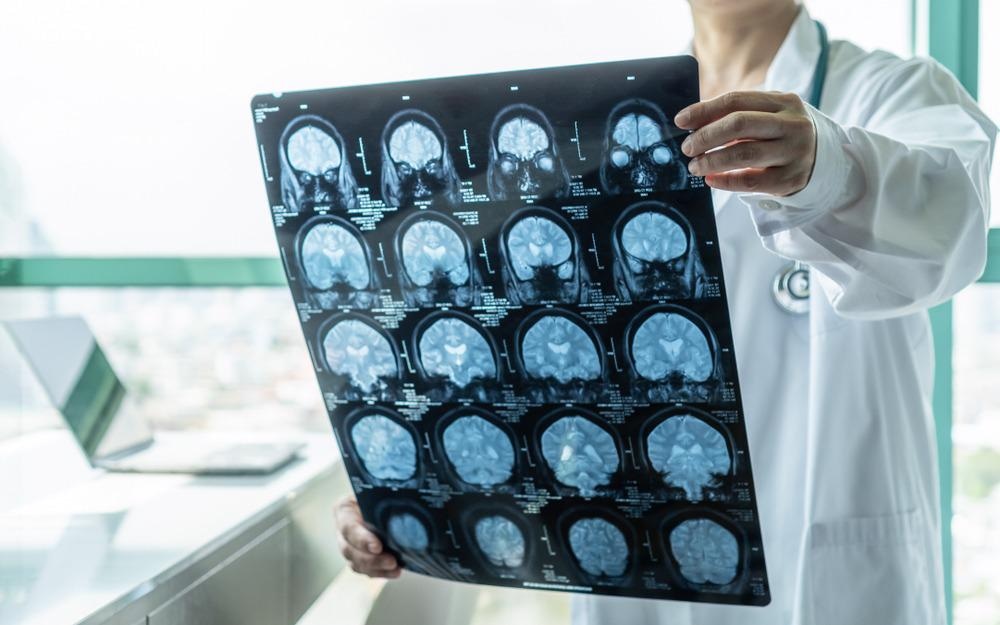Laser adsorption ionization mass spectrometry (LDI-MS) utilizing citrate-capped gold nanoparticles (AuNPs) has shown extensive application involving the ionization of many compounds.

Image Credit: Chinnapong/Shutterstock.com
Advances in mass spectrometry (MS) have been traced through publishing trends over the last 100 years, and they range from foundational specific molecular ion chemistry to scientific innovations. Recent research was published in the Journal of the American Society for Mass Spectrometry. explores how gold nanoparticles are being utilized for MS in neurological research.
The ionizing process itself has a substantial bearing on the performance and quantity of the produced MS raw data (i.e., the number and intensity of peaks formed). Research involving an AuNP-based method for the ionization of neurotransmitters is discussed here.
The Challenge of Utilizing Nanoparticles in Mass Spectrometry
MSI (mass spectrometry imaging) still has substantial problems in terms of specimen preparation and practical lateral spatial resolution. Maintaining optimal conditions for homogenous matrix crystal formation, in particular, can be difficult in MALDI imaging.
While pneumatic sprinklers and sublimation techniques have significantly decreased these issues, there is still a basic limit to crystal size in nanoparticles, affecting pixel resolution. Furthermore, analyte delocalization is a persistent difficulty in reducing matrix requirements for analyte molecule extraction while maintaining sample integrity, even for analytes with high diffusivity. MSI continues to struggle with instrument-to-instrument and lab-to-lab repeatability, particularly when it comes to sample preparation.
Gold Nanoparticles and Neurological Research
Inorganic materials, such as nanoparticles (NPs), have been widely used in MS and have distinct ionization effects not seen with standard organic matrixes. However, their widespread use has yet to be met.
Gold (Au), silicon, silver, and carbon have all been used, and peptides, carbohydrates, bile acids, steroids, and other lipids have all been demonstrated to be ionized by AuNPs.
On the target plate, acetylcholine ACh did not require AuNPs to ionize (due to the quaternary amine's fixed charge), but still, it did on tissue samples. While the goal of these control studies was to see if any NTs desorb as prepared ions, there were expected to be variances between the target plate and the tissue. Researchers deduced that ionization efficiency was influenced by changes in analyte concentration and the overall intricacy of the background matrix.
Here, the use of citrate-capped AuNPs sprayed onto tissues expands LDIMSI's analytical capabilities to substances that are difficult to ionize or must be derivatized first before being ionized.
AuNPs have been shown to successfully ionize neurotransmitters, mainly tertiary and secondary amines, as well as amino acids of relevance in the brain. For example, AuNPs can be sprayed pneumatically onto tissue slices for LDI-MS applications in rabbit brain, zebrafish embryos, and neuroblastoma cells.
With just one run of AuNPs, strong NT signal intensities were obtained to enable MSI with a lateral resolution of 5 m. It also demonstrated AuNPs' tremendous versatility in sample preparation, tissue preservation, and numerous MSI tests of the same AuNP sprayed region.
Challenges
Neurotransmitters (NTs) have proven difficult to identify in situ using classic MALDI methods due to their low abundance (e.g., nanomolar to picomolar concentrations) and low molecular mass, resulting in considerable chemical noise, and m/z overlap with most typical matrixes.
A few of the obstacles are obtaining a lateral pixel density that offers relevant cellular data (5 m), producing tiny enough matrix crystal dimensions, and ionization enough molecules for appropriate detection sensitivity are only.
The imaging of molecules has been made possible by blasting NP nanolayers onto tissue or plant segments. Although recent research shows that transfer of energy from AuNPs to the analyte may happen through a thermally driven process, the ionization mechanism of NPs is not entirely known; this lack of consensus may contribute to the infrequent use of these materials.
Future Outlooks
More investigations are needed to verify the complete range of sample flexibility; for example, ten precursor ions have been validated using MS/MS on one zebrafish tissue segment with no signal loss, suggesting a possibility of more. These are the first MSI data of zebrafish embryos that simultaneously map numerous NTs that researchers are aware of, opening interesting new options for the field of developmental biology.
Gold is a multipurpose substance with bacteriostatic, anticorrosive, and antioxidative qualities that has been used in medicine. It even has advanced applications that take full advantage of its capacity, enabling the addition of different functional groups, including such targeted antibodies or drug products.
Continue reading: The Potential of Plasmonic Nanoparticles in Biomedical Applications.
Reference and Further Reading
McLaughlin, N., Bielinski, T., Tressler, C., Barton, E., Glunde, K. and Stumpo, K., (2020) Pneumatically Sprayed Gold Nanoparticles for Mass Spectrometry Imaging of Neurotransmitters. Journal of the American Society for Mass Spectrometry, 31(12), pp.2452-2461. Available at:https://pubs.acs.org/doi/10.1021/jasms.0c00156
Disclaimer: The views expressed here are those of the author expressed in their private capacity and do not necessarily represent the views of AZoM.com Limited T/A AZoNetwork the owner and operator of this website. This disclaimer forms part of the Terms and conditions of use of this website.